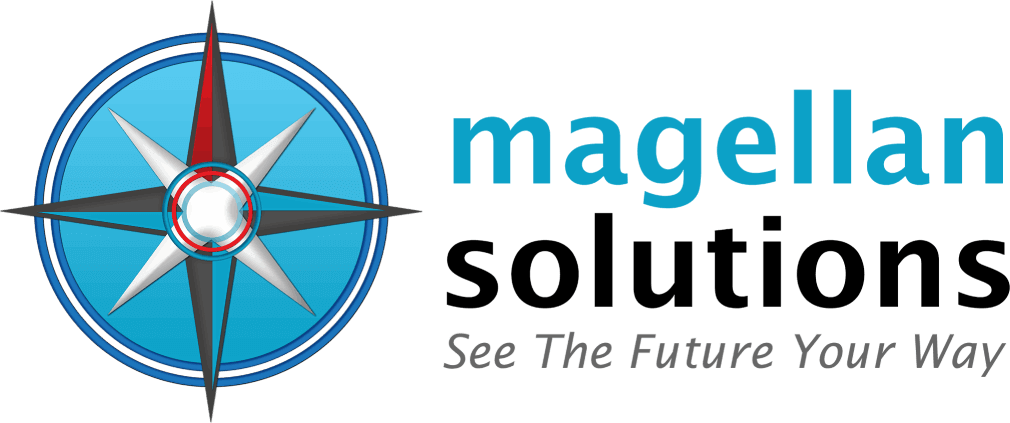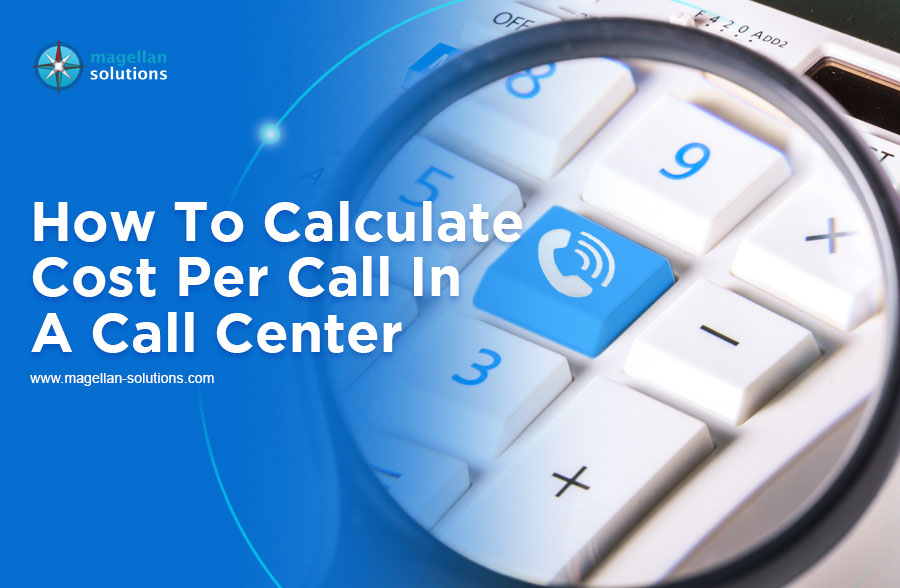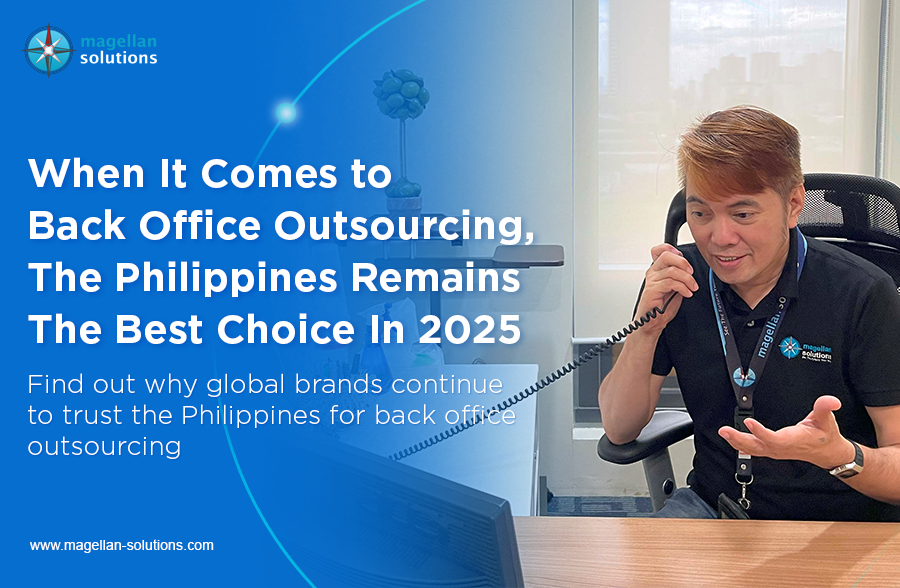Schedule a FREE call with our outsourcing expert now and get a precise quotation that meets your requirements. Don't wait - get started today!
Businesses outsource their call center services to cut costs. But how can you calculate the fee per call to ensure you save money instead of spending more?
Delivering exceptional customer service and creating a remarkable customer experience are paramount for success. Call centers play a crucial role in this endeavor, as they are often the primary touchpoint between a company and its customers. Call centers can foster strong brand loyalty and advocacy by prioritizing customer service and focusing on enhancing the customer experience. This involves providing efficient and friendly assistance, actively listening to customer concerns, and demonstrating empathy throughout every interaction.
Additionally, technology and innovative solutions can further elevate the customer experience, ensuring seamless and personalized service.
This article will discuss the primary method of calculating cost per minute call center and the other factors in determining how much you need for your initial investment.
How Do You Calculate the Cost per Call?
Cost per call (CPC) is a metric used to determine the budget allocation per call. It measures the overall efficiency, including the ratio of agents to calls.
When analyzing CPC, looking at cost and call volume is essential. Having a direct correlation, these two factors affect the total amount you invest once you outsource your call center.
When determining the cost per call in a call center, it’s crucial to consider both inbound and outbound call center operations. For an inbound call center, the cost per inbound call is typically calculated by dividing the total operational costs, including agent salaries, infrastructure, and overheads, by the total number of calls handled within a specific period. On the other hand, outbound call centers may use a different call center pricing model, factoring in the cost of lead generation, dialing technologies, and performance-based incentives.
Accurately calculating the cost per call enables call centers to analyze their profitability, identify areas for cost optimization, and make informed decisions regarding their pricing strategies and resource allocation.
Cost per Call Formula
The basic formula to calculate cost per call is pretty simple.
First, determine the total operating budget of your call center for a certain period, which includes the following:
- employee wages and benefits
- overhead expenditures
- HR and recruitment
- training
- management
- administrative needs (office space, maintenance, power supply)
- IT needs (internet, software licensing, hardware)
Next, divide the total cost by the total number of calls from the same period. The quotient is your CPC.
The equation appears like this:
Cost per call = Total costs / Total calls
Check out this example:
A telecommunications company spent $25,000 in costs to answer 50,000 calls.
Cost per call = $30,000 / 50,000
Cost per call = $0.60
Again, this formula to calculate cost per call covers only the basics of determining the total cost of outsourcing to a call center. There are also other factors to consider. Modern call centers manage more channels besides the phone, adding “non-directly associated” costs. Apart from this, the type of call — resolved or abandoned — also matters.
When using a telephony device like the ACD, abandoned and transferred calls are not counted twice. This means the resulting CPC becomes lower.
To solve this, subtract the abandoned or transferred calls from the total calls.
In this case, the equation looks like this:
Cost per call = Total costs / Total calls – abandoned or transferred calls
Cost per Minute Formula
When you outsource, you can choose an omnichannel call center service to reach and serve more customers. However, determining its cost per contact becomes too complex, mainly when your staff handles multiple channels simultaneously.
The best way to determine the cost of this setup is by calculating the cost per working minute.
Its formula is almost the same when you calculate cost per call, but instead of dividing the total cost by the number of calls, divide it by the number of minutes.
Cost per minute = Total costs / total number of minutes
This formula works well for call centers that use different channels and often experience disparity in call length.
Expanding Metrics: The Importance of Calculating Cost-Per-Interaction
In an omnichannel world, looking at cost-per-call alone gives you a too-narrow lens. It’s essential to examine cost-per-interaction, capturing every touchpoint. That might include email, chat, or social media.
If you don’t, then you might underestimate the resources applied to your non-call interactions, which may be equally resource-intensive as calls in certain cases. Integrate cost-per-interaction into your analysis and you’ll gain a deeper understanding of the total cost of service and new opportunities for optimization.
The Anatomy of Call Center Costs: A Detailed Breakdown
You can’t accurately calculate cost-per-call without understanding the full spectrum of costs that go into running a call center. These include labor costs and telephony infrastructure costs such as the following:
- agent wages and the recruiting
- Hiring and training of new agents
- software licensing fees
- real estate
It all sums up to a total operational expense, revealing the cost-effectiveness of your call center operations, from the underlying core technology, to how effective your calling campaigns are. Accurately accounting for these costs is essential in developing a cost reduction strategy, and providing you the ability to understand new efficiencies.
How to figure out the number of the base staff
Running a call center requires just the correct number of call center agents. When starting a campaign, it is essential to determine the number of base staff you need to prevent overstaffing or understaffing. This gives you an easier and faster way to scale your business when the right time comes.
Beyond Basic Calculations: Additional Factors Affecting Cost-Per-Call
Determining your true cost-per-call requires looking beyond the immediate costs. Factors such as abandoned calls and repeat callers will play a crucial role in your analysis.
An abandoned call is one in which the customer disconnects before reaching an agent, and they are an important metric for evaluating your call management system.
Similarly, repeat callers—those who have to call your service multiple times to have an issue resolved—will quickly inflate your costs, and also your customers’ blood pressure and your bottom line.
In other words, these elements don’t just factor into your cost-per-call metric, they are giant flashing arrows to areas in your customer satisfaction and service delivery that need improvement.
Calculating Staff Workload
Calculate the staff workload first to determine the number of agents your campaign requires.
Staff workload is the amount of work an employee needs to perform within a specific timeframe. It helps you create an efficient staff schedule, primarily if your call center operates 24/7.
Here’s the step-by-step method of calculating staff workload:
- Forecast the estimated monthly calls (amount of workload) you expect to receive by analyzing trends and seasonal patterns from your historical data.
- Break down the numbers into weekly, daily, and hourly forecasts.
- To calculate the staff workload, multiply the number of forecast calls per hour by the average handle time (AHT). Take note that the main elements of AHT are (1) the actual talk time with a customer and (2) the call wrap-up time — any activities after the call. Wrap-up time may include sending additional instructions through email, filling out forms, etc.
Staff workload = Forecast calls per hour x average handle time
By knowing the workload volume, you can now determine the number of base staff you need. After this, you can finally work out their schedule.
Remember that the time of the day, week, or even seasonality dramatically affects the average number of calls and the AHT. As a result, the staff workload during the day and night shifts is entirely different. If you have a clear insight into what time the workload is the heaviest, you can create a more equitable schedule for your agents.
How Outsourcing to Offshore Locations Reduces Costs
The site of the call center company significantly impacts call center costs.
Asian countries, particularly the Philippines and India, offer some of the cheapest call center services globally. Despite its low rates, the service quality remains the same, especially if you choose the right service provider.
The main reason for the service affordability in these countries is its labor market rate.
For instance, aminimum wage earner in the Philippines earns PHP610 or US$10.88 per day. That means the introductory hourly rate of a Filipino call center agent is PHP67.13 or US$1.38. Meanwhile, the minimum hourly wage in the United States ranges from US$7.25 to US$14.
Imagine your savings if you move your call center to an offshore location!
Of course, the abovementioned amount covers only the salary. Other factors that affect the final cost of an outsourced call center service are the complexity of the service, recruitment, training, management, IT maintenance, administrative needs, and other add-on services.
Since these factors’ prices vary from one call center to another, it would be better to talk with an outsourcing company representative directly to get an exact price quotation.
Lower Your Overall Call Center Expenses
The cost-per-call metric is nice-to-have data because it allows you to determine the base cost of a call center service. However, relying solely on your CPC is insufficient to think of cost-saving strategies. It would be best if you saw the bigger picture to devise a clear-cut method of lowering your expenses without compromising service quality.
Outsourcing is one of the best solutions for that. This business activity allows you to reduce the cost per call and all of its associated expenditures.
If you’re having second thoughts because the pricing of top call centers is still beyond your budget, consider Magellan Solutions.
Magellan Solutions is a Philippine-based company dedicated to helping small businesses save operational costs while maintaining the quality of calls. If you wish to know more, contact us using the form below.
















